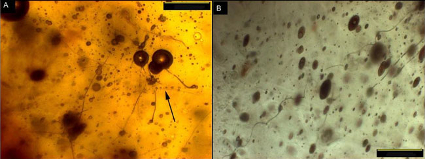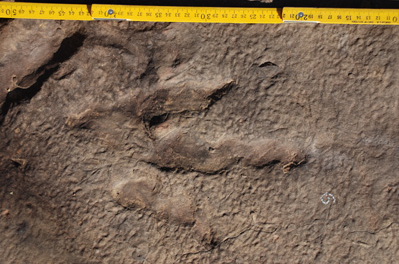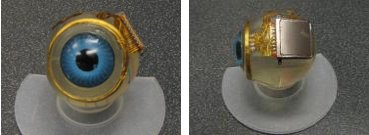Yesterday National Geographic unveiled an exclusive video, “Secrets of Google’s 3-D Mars, Moon“. The video offers tips on getting the most of Google Earth’s Space features, and information on little known features found within the application. Featured in the video are two former NASA scientists who now work for Google: (more…)
The oldest known spider webs, approximately 140 million years old in fact, have been discovered preserved in amber. Despite the timing, with Halloween arriving and the close association of spider webs to the spooky holiday, this is no trick. 
In research conducted by Katie Liljenquist of Brigham Young University, Chen-Bo Zhong of the University of Toronto, and Adam Galinsky of Northwestern University, test clearly showed that people exposed to rooms with fresh, clean smells such as those freshly spritzed with Windex, were more fair and generous than people in normal-smelling rooms. Those who were in the clean-smelling rooms didn’t consciously remember the smell, but they proved to be more willing to share and donate than the groups in rooms that had not been spritzed.
A team of researchers, including Dezhe Jin, assistant professor of physics at Penn State University and neuroscientists from MIT and Japan’s RIKEN Brain Science Institute have discovered that specific neurons in primate brains keep track of time. This knowledge could help in creating cures for diseases such as Parkinson’s, in which the ability to control the timing of movements is impaired.

You Smell Funny
10.15.09Has anyone ever told you that you smell funny? Hopefully not, but if so, they likely weren’t talking about your odorprint, but in reality, your sense of humor (or any other trait or mood) may have some relevance to how you smell. Just as each of us has our own unique fingerprint, we may also each have our own unique odorprint.

In the 16th and 17th centuries, one plant stirred the imaginations and wonder of scientists with its fabled mythology that extends as far back as 425 B.C. The myth claimed that the Vegetable Lamb plant, Cibotium barometz, actually contained fruit that ripened into a live baby sheep. The sheep, tethered to the plant by its umbilical cord, would graze nearby.

Despite the mythology, the plant itself is real, and scientists have discovered a potential new use for it, as a treatment for osteoporosis.
Researchers re-analyzed a fossilized tracksite in southern Africa that was originally discovered more than 40 years ago, and were able to discern how early dinosaurs made on-the-fly adjustments to their movements to cope with slippery and sloping terrain. This analysis also provides insight into later evolution of the group.
The research was conducted by researchers at the University of Michigan, Argentina’s Universidad de Buenos Aires and the Iziko South African Museum in Cape Town, South Africa at the Moyeni tracksite in Lesotho. More than 250 footprints exist there, dating from the beginning of the Jurassic Period about 200 million years ago.
Professor Jo Milner and Dr. Shafiq Ahmed, scientists at the University of York have identified and successfully silenced a gene, JNK2, that appears essential to cancer cell survival. By using a process called RNA interference, they were able to kill the cancer cells without affecting the healthy cells.
What is being suggested by this discovery is that cancer cells must have certain genes to survive, but healthy cells do not require those genes. If the genes are silenced, the cancer cells die but the healthy cells remain unaffected – all without the use of radiotherapy or chemotherapy. While testing still has a long way to go, the potential of this discovery is enormous.
Science Magazine has published a special issue that details the discovery of a hominid that predates Lucy by over a million years. “Ardi” is now the oldest known hominin skeleton and is Lucy’s ancestor. Ardi, an Ardipithecus ramidus from Aramis, Ethiopia is the oldest known skeleton of a potential human ancestor who reveals the body plan of our very early ancestors and the upright origins of humankind.
The skeleton includes most of the skull and teeth, as well as the pelvis, hands, and feet – parts that the authors say reveal an ‘intermediate’ form of upright walking. Much to some surprise, she doesn’t look much like a chimpanee, gorilla or any of the other primates we usually associate with this progression.
(more…)
MIT announced that a retinal implant could restore some limited vision capabilities to people with certain forms of blindness. While vision wouldn’t be restored fully, this chip could help people who have lost their vision from retinitis pigmentosa or age-related macular degeneration to navigate rooms, or walk down a sidewalk.
Copyright © 2006 - 2011 discoverybuzz.com.


